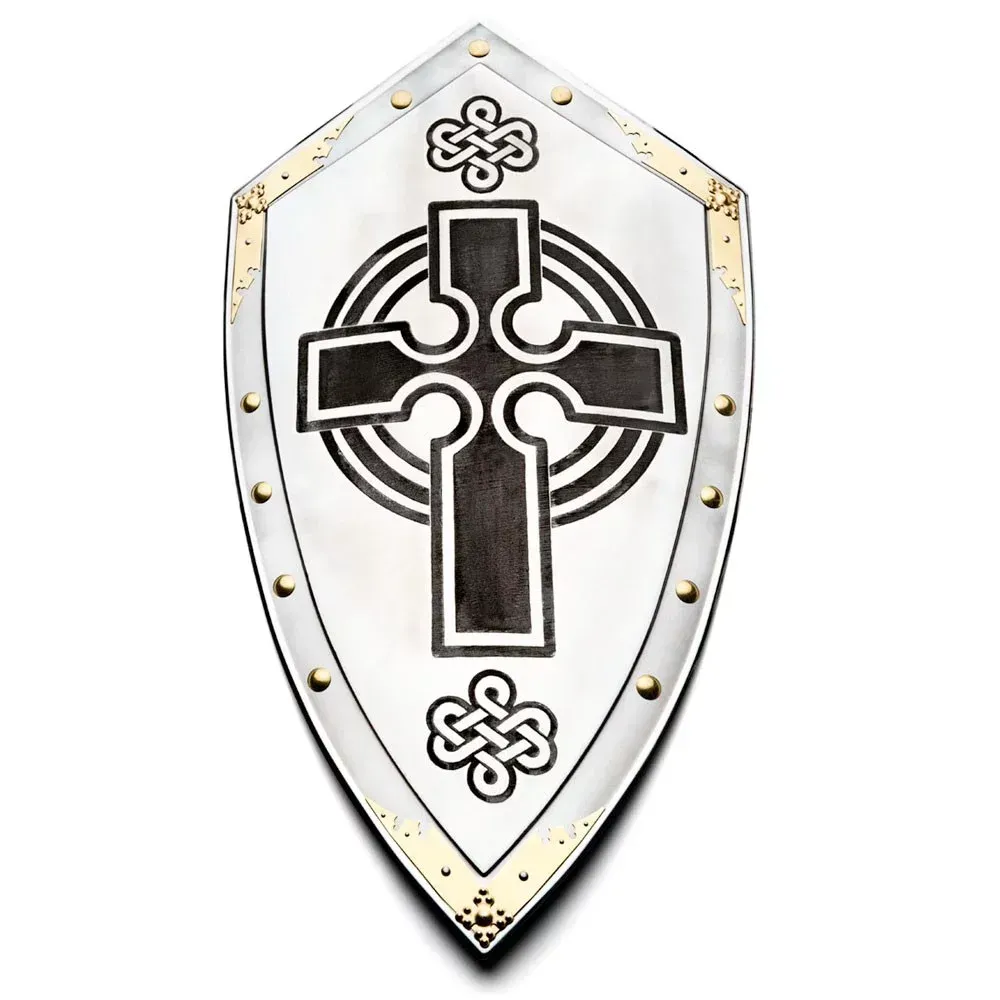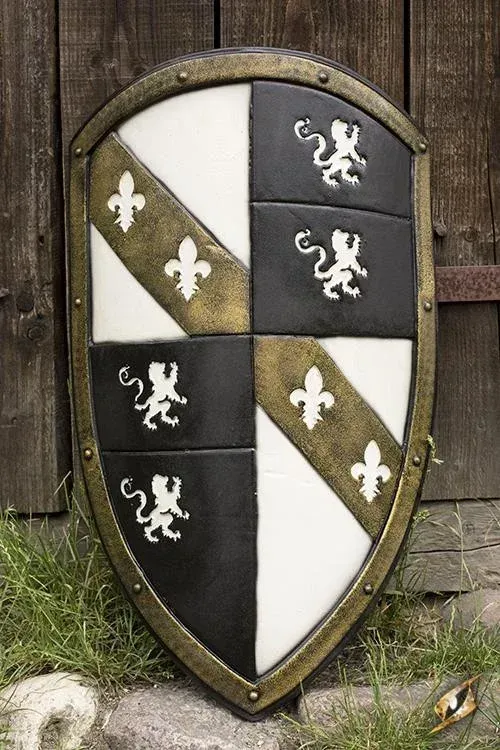What is the Comet Shield?
The comet shield, also known as the tear shield or Norman shield, stands as one of the most representative symbols of the medieval era. Conceived primarily between the 11th and 12th centuries, it not only served as a fundamental piece in combat but also stood out as a characteristic element of the Normans. Its architecture and design marked a milestone in military technology of that period, transforming it into an object of study and admiration in history.
Origins and Description
This shield has its roots in medieval Europe, particularly in the Norman region. Although the modern term "comet" has become popular, in its time it was more frequently referred to as "tear" or "Norman," alluding both to its curved shape and its predominant use by the Normans. Its design was strategic and functional, adapting to the needs and tactics of Norman warfare.
Characteristics of the Comet Shield
- Shape: The shield features a rounded structure at the top that tapers into a cone shape towards the bottom. This particular configuration allowed for some additional protection for the user's legs without adding excessive weight.
- Materials: The shield's construction included laminated wood, often covered with canvas and leather, materials that provided lightness and durability. In some cases, it was reinforced with iron plates to ensure greater durability.
- Use: Both infantry and knights made use of this shield. It was secured to the arm with leather straps, facilitating a defense that covered nearly the entire body.
- Evolution: As the years passed, the shield evolved, transitioning from very curved shapes to flatter and straighter variants at the ends, thus offering greater versatility on the battlefield.

Historical Significance
The comet shield, beyond being an effective defensive device, represented a leap in medieval military technology. Its particular design allowed for blows to be intercepted and deflected efficiently, using the so-called umbo. This aspect proved especially useful in both hand-to-hand confrontations and ranged combat.
Use in the Middle Ages
Throughout the Middle Ages, the comet shield was a fundamental part of military strategies. The Normans, recognized for their military prowess, integrated it into their campaigns. Over time, it replaced the previously dominant round shield. However, by the late 12th century, the introduction of more advanced armor led to a reduction in shield size, eventually causing it to be completely eliminated by the 14th century.

Legacy
The legacy of the comet shield is evident not only in military history but also in medieval culture. It inspired the distinctive shape of the heraldic shield, enduring to this day. This shield is an icon of the medieval period, evoking the skill and military strategy of the Normans.
This analysis of the comet shield highlights its historical importance and its impact on the development of medieval military technology. Incorporated into numerous military campaigns, this shield stood out for both its functionality and its design, leaving an indelible mark on the imagination and symbolism of the era.




























